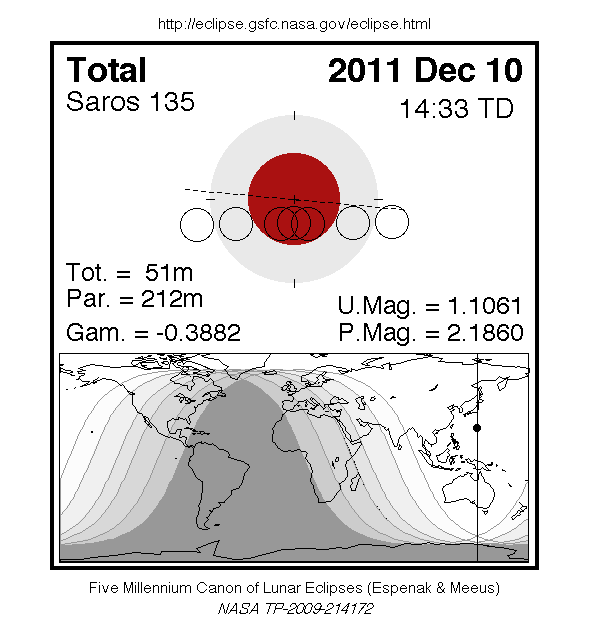December days are shortest, which gives us extra hours to gaze heavenward for the Full Cold Moon and a Lunar Eclipse.
Full Moon on the 10th. Early Native American tribes called it the Full Cold Moon. For equally obvious reasons, it is also known as the Moon Before Yule and the Full Long Nights Moon.

A Total Lunar Eclipse will be visible throughout most of North America. (
NASA Map and Eclipse Information)
December 13, 14 - Geminids Meteor Shower. This awesome event is considered to be the best meteor shower, known for producing up to 60 multicolored meteors per hour at their peak. Some meteors should be visible from December 6 - 19. The radiant point for this shower will be in the constellation Gemini. Look towards the east after midnight from a dark location.
December 22 - December Solstice. The December solstice occurs 05:30 UTC. The South Pole of the earth will be tilted toward the Sun, which will have reached its northernmost position in the This is the first day of winter (winter solstice) in the northern hemisphere and the first day of summer (summer solstice) in the southern hemisphere.
December 24, the New Moon will be directly between the Earth and the Sun and will not be visible from Earth. This phase occurs at 18:06 UTC.








No comments:
Post a Comment